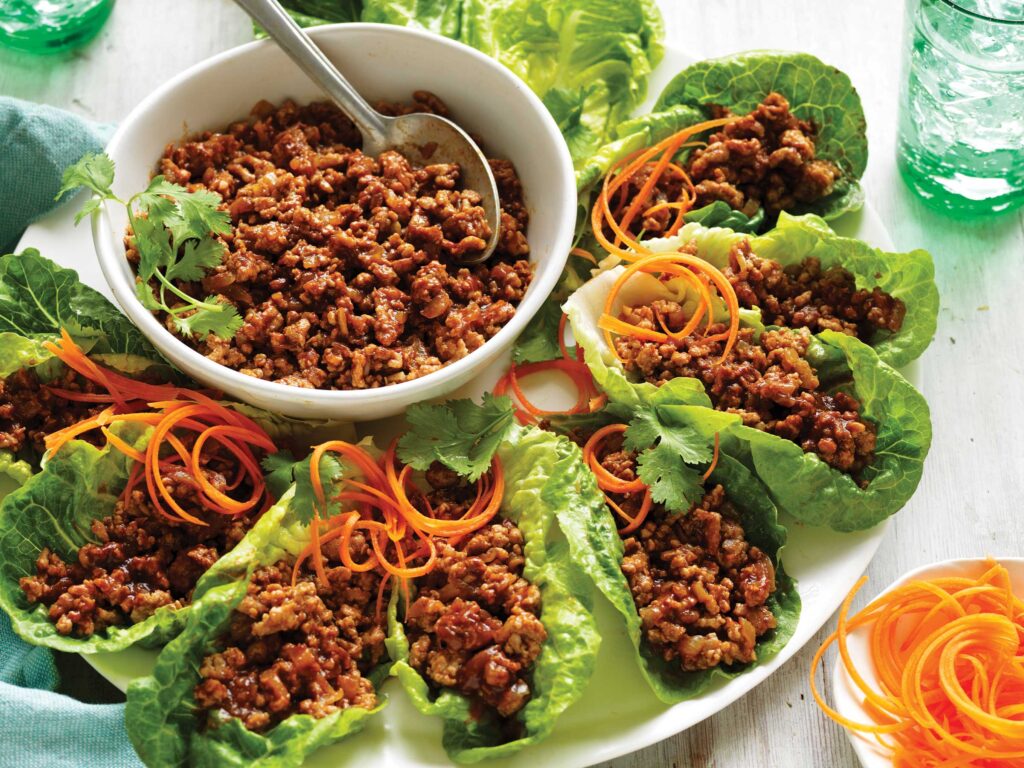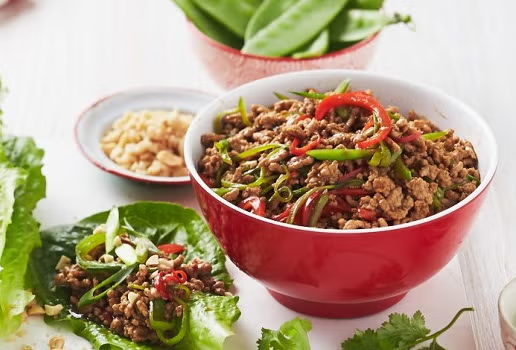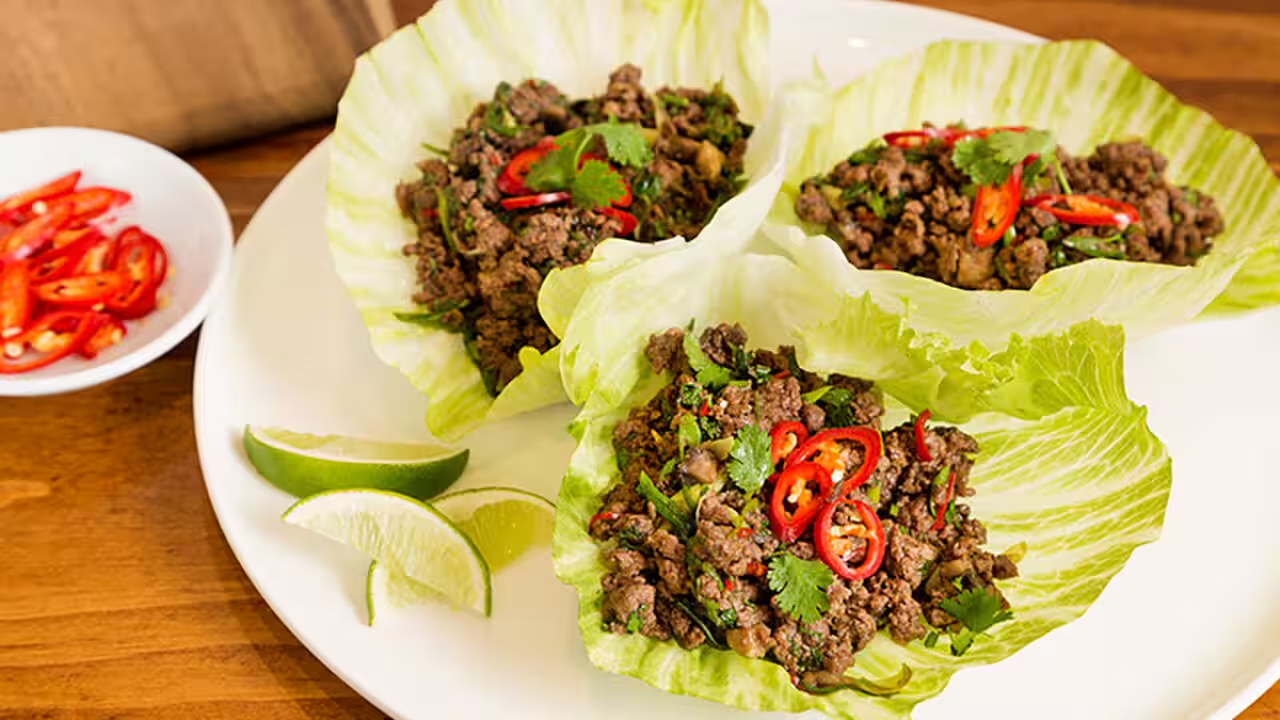
In this epic 5000+ word article, we’ll cover the essentials and beyond. From the dish’s rich cultural heritage to foolproof recipes that guarantee restaurant-quality results, you’ll find internal links to related content on our site like our Chinese Cuisine Essentials page or Healthy Asian Appetizers. For deeper dives, check out external resources such as the authentic recipes from Precipitin Eats or historical insights from culinary forums like Seasoned Advice. Let’s embark on this flavorful journey and make San Choy Bau your new go-to dish!
What Is San Choy Bau? Unraveling the Mystery of This Iconic Dish
San Choy Bau is more than just a meal—it’s an experience that tantalizes your taste buds with every crunchy, juicy bite. At its core, this powerhouse appetizer features minced meat (typically pork, chicken, or beef) stir-fried with a symphony of vegetables like water chestnuts, mushrooms, and carrots, all enveloped in a savory sauce bursting with umami from soy sauce, oyster sauce, and hoisin. The real magic happens when this flavorful filling is scooped into crisp lettuce leaves, creating handheld wraps that are as fun to eat as they are delicious.
Originating from Cantonese cuisine, San Choy Bau translates roughly to “lettuce wrap” in English, highlighting its simple yet genius construction. The dish’s appeal lies in its perfect balance: the cool, refreshing crunch of iceberg or cos lettuce contrasts beautifully with the warm, aromatic filling, making it an ideal starter for any occasion. Whether served at a bustling family gathering or a sophisticated cocktail party, San Choy Abu’s versatility shines through.

But why has this dish exploded in popularity? In today’s health-conscious world, San Choy Bau stands out as a low-carb, gluten-free option that’s naturally packed with nutrients. It’s customizable for various diets—think vegan versions with tofu or keto adaptations sans carbs—ensuring everyone can indulge. According to food experts, its rise in Western countries like Australia and the US can be attributed to the fusion food trend, where traditional Asian flavors meet modern convenience.
Imagine biting into a wrap where the tender mince melds with the nutty crunch of peanuts or cashews, enhanced by zesty ginger and garlic. It’s no wonder San Choy Bau has become a staple in Chinese restaurants globally. For more on similar dishes, explore our internal guide to Asian Street Food Favorites.
The Fascinating History and Origins of San Choy Bau
Delve into the captivating backstory of San Choy Bau, and you’ll uncover a tale woven into the fabric of Chinese culinary tradition. Believed to hail from the vibrant region of Guangdong Province in southern China—specifically Guangzhou (formerly Canton)—this dish embodies the essence of Cantonese cooking: fresh ingredients, balanced flavors, and minimal fuss.
Historical records are sparse, but culinary historians trace San Choy Abu’s roots to ancient Chinese banquets where lettuce symbolized prosperity and good fortune. In Cantonese dialect, “san choy” refers to lettuce, while “bau” means wrap or package, suggesting it was originally a way to “wrap” luck and wealth into meals during festivals like Chinese New Year. Some sources point to Hong Kong as a key influencer, where colonial interactions blended Eastern and Western elements, popularizing the dish in the mid-20th century.
As waves of Chinese immigrants spread across the globe, San Choy Bau evolved. In Australia, it became a beloved entree in suburban Chinese eateries, often adapted with local ingredients for broader appeal. Thai and Vietnamese influences introduced spicier variants, like lab, which shares similarities but uses fish sauce and lime for a tangier profile. Today, it’s a global phenomenon, featured in cookbooks and TV shows, symbolizing the fusion of cultures.

Did you know? Early versions might have used pigeon or quail meat for a luxurious touch, reserved for nobility. Over time, pork became the standard, making it accessible to all. For a deeper historical context, visit Wikipedia’s page on Cantonese Cuisine or our internal History of Asian Dishes section.
This evolution underscores San Choy Bau’s adaptability, from imperial courts to modern kitchens. Its journey reflects broader themes in food history: migration, innovation, and the universal love for handheld delights.
Cultural Significance: Why San Choy Bau Holds a Special Place in Hearts and Homes
Beyond its tantalizing taste, San Choy Bau carries profound cultural weight, serving as a bridge between tradition and contemporary life. In Chinese culture, lettuce wraps are more than food—they’re symbols of abundance. The word “choy” sounds like “wealth” in Cantonese, making San Choy Bau a staple at Lunar New Year feasts to invite prosperity.
In family settings, preparing San Choy Bau fosters communal bonding. Everyone gathers around the table, assembling their wraps, sharing stories, and creating memories. This interactive element mirrors dim sum traditions, where sharing small plates strengthens social ties. In diaspora communities, like those in Australia or the US, it represents a connection to heritage, often adapted to local palates while preserving core flavors.
Globally, San Choy Bau embodies fusion cuisine’s rise. Chefs worldwide experiment, incorporating elements from Korean bulgogi or Mexican tacos, highlighting cultural exchange. Its health-forward profile aligns with modern wellness trends, promoting mindful eating in a fast-paced world.
For cultural enthusiasts, explore festivals where San Choy Bau shines, like Hong Kong’s Mid-Autumn Festival. Link to our Cultural Food Traditions for more, or external sites like BBC Travel on Chinese Festivals.
Mastering the Traditional San Choy Bau Recipe: Step-by-Step to Perfection
Ready to create your own mouthwatering San Choy Bau? This classic pork version serves 4 and takes just 20 minutes—pure culinary magic!
Ingredients for Irresistible Flavor
- 500g pork mince (lean for healthier twists)
- 1 tablespoon sesame oil
- 2 garlic cloves, minced
- 1 tablespoon grated ginger
- 1 onion, finely chopped
- 1 can (227g) water chestnuts, drained and chopped
- 100g mushrooms, diced
- 2 tablespoons oyster sauce
- 2 tablespoons soy sauce
- 1 tablespoon hoisin sauce
- 1 teaspoon sugar
- 1/2 cup green onions, sliced
- 1 head iceberg lettuce, leaves separated
- Optional: Crushed peanuts for crunch
Explosive Step-by-Step Instructions
- Prep Your Ingredients: Chop all veggies finely for even cooking. This ensures every bite is balanced and bursting with texture.
- Heat the Wok: In a large wok or skillet, heat sesame oil over medium-high. Add garlic, ginger, and onion; stir-fry for 1-2 minutes until fragrant. The aroma will ignite your senses!
- Brown the Mince: Add pork mince, breaking it up with a spoon. Cook for 5-7 minutes until browned and no pink remains. Drain excess fat for a lighter dish.
- Add Veggies and Sauces: Toss in water chestnuts and mushrooms. Stir in oyster, soy, hoisin sauces, and sugar. Simmer for 3-4 minutes until the mixture thickens and flavors meld into savory perfection.
- Finish with Freshness: Stir in green onions. Taste and adjust seasoning—add chili for heat if desired.
- Assemble and Serve: Spoon filling into lettuce leaves. Top with peanuts. Fold and enjoy the crunchy, juicy explosion!
Pro Tip: For authenticity, use a hot wok to achieve that wok hei (breath of the wok) flavor. Recipe inspired by Featherweights. Link to our Essential Kitchen Tools for the best woks.
This recipe yields about 8-10 wraps, perfect for sharing. Calories per serving: Approximately 250, making it a guilt-free indulgence.
Exciting Variations: Customize San Choy Bau for Every Palate
San Choy Abu’s adaptability is its superpower. Here are powerhouse variations to keep things fresh:
Chicken San Choy Bau: Lighter and Leaner
Swap pork for 500g chicken mince. Add bamboo shoots for extra crunch. This version is lower in fat, ideal for weight watchers. Serve with our Chicken Recipes Collection.
Vegetarian Delight: Mushroom or Tofu Magic
Use 400g diced mushrooms or firm tofu instead of meat. Boost with cashews for protein. This plant-based powerhouse is vegan-friendly and loaded with umami from extra soy sauce. Check our Vegetarian Asian Dishes.
Beef Twist: Bold and Hearty
Opt for 500g beef mince, adding carrots and bell peppers for sweetness. Spice it up with Sriracha for a fiery kick. Perfect for meat lovers seeking robust flavors.
Keto-Friendly Adaptation
Omit sugar and hoisin; use tamari instead of soy. This low-carb version keeps net carbs under 5g per serving, aligning with keto lifestyles.
Seafood Sensation
Incorporate prawns or crab for a coastal vibe. Inspired by Thai larb, add lime juice for zing.
Each variation maintains the dish’s core appeal while catering to dietary needs. Experiment and link to Custom Recipe Ideas on our site.
Unlock the Health Benefits: Why San Choy Bau Is a Nutritional Powerhouse
San Choy Bau isn’t just delicious—it’s a health hero in disguise. Low in calories yet high in satisfaction, one serving packs protein for muscle repair, fiber from veggies for digestion, and vitamins like A and C for immunity.
The lettuce base makes it naturally low-carb, aiding weight management and blood sugar control. Pork or chicken provides essential amino acids, while water chestnuts add manganese for bone health. Mushrooms contribute antioxidants, fighting inflammation.

Compared to fried appetizers, San Choy Bau is lighter, reducing heart disease risk. For vegetarians, tofu versions offer plant-based protein. Overall, it’s a balanced meal promoting wellness without sacrificing taste. Explore more in our Health Benefits of Asian Foods section or external Harvard Health on Low-Carb Diets.
| Nutrient | Amount per Serving | Benefits |
|---|---|---|
| Protein | 20g | Muscle building |
| Fiber | 4g | Digestive health |
| Vitamin C | 15% DV | Immune boost |
| Calories | 250 | Weight control |
This table highlights why San Choy Bau is a smart choice.
Pro Tips and Tricks: Elevate Your San Choy Bau Game
Master San Choy Bau with these insider secrets:
- Lettuce Selection: Choose firm, crisp iceberg for best cups. Chill leaves in ice water for extra snap.
- Flavor Boosters: Marinate mince in soy-ginger mix for 15 minutes.
- Texture Hacks: Add crushed rice noodles for crunch without carbs.
- Make-Ahead Magic: Prep filling up to 24 hours ahead; reheat gently.
- Common Mistakes to Avoid: Don’t overcook mince—keep it juicy. Balance sauces to avoid saltiness.
- Storage Savvy: Store filling in airtight containers for 3 days; refresh with fresh lettuce.
These tips ensure flawless results every time. For more, visit our Cooking Tips Hub.
Perfect Pairings: What to Serve with San Choy Bau for an Unforgettable Meal
Elevate San Choy Bau by pairing it with complementary dishes. Start with hot and sour soup for a tangy contrast, or spring rolls for added crunch. Main courses like stir-fried noodles or fried rice provide carb balance.
Beverages: Green tea cleanses the palate; white wine like Riesling cuts through richness. For desserts, mango sticky rice offers sweet relief.
Themed menus: Pair with dim sum for a Cantonese feast or Thai salads for fusion flair. Link to our Meal Pairing Guides.
Frequently Asked Questions: Your San Choy Bau Queries Answered
Q: Is San Choy Bau gluten-free?
A: Yes, use tamari instead of soy sauce.
Q: Can I make it vegan?
A: Absolutely—substitute with tofu and vegan oyster sauce.
Q: How spicy is it?
A: Mild by default; add chili to taste.
Q: What’s the difference from lab?
A: Lab is Thai/Laotian, with fish sauce and herbs; San Choy Bau is Cantonese, saucier.
More FAQs in our Recipe FAQ Section.
